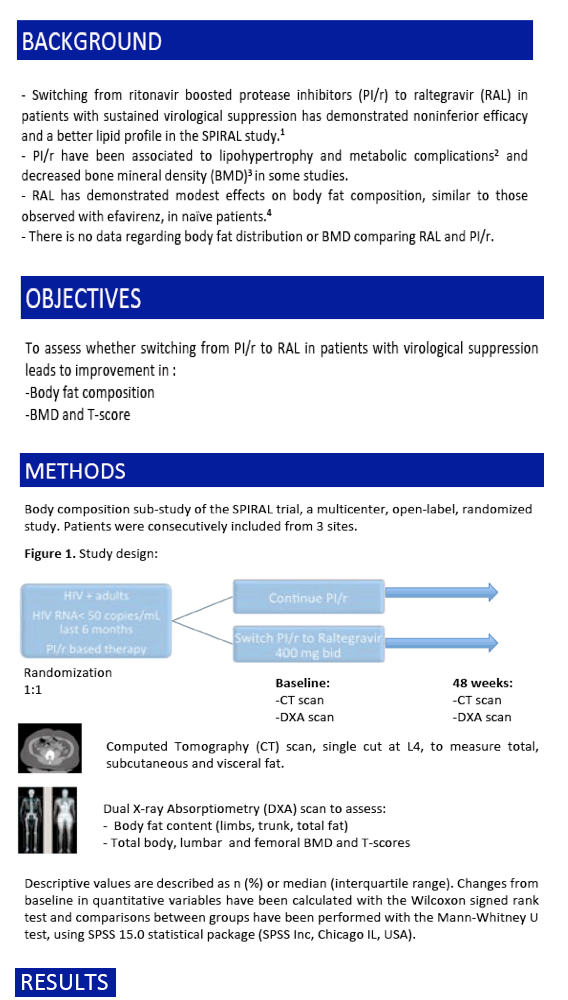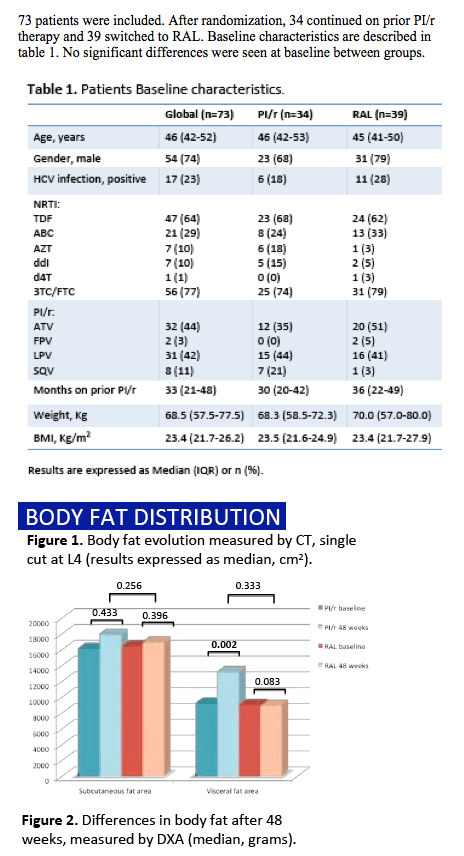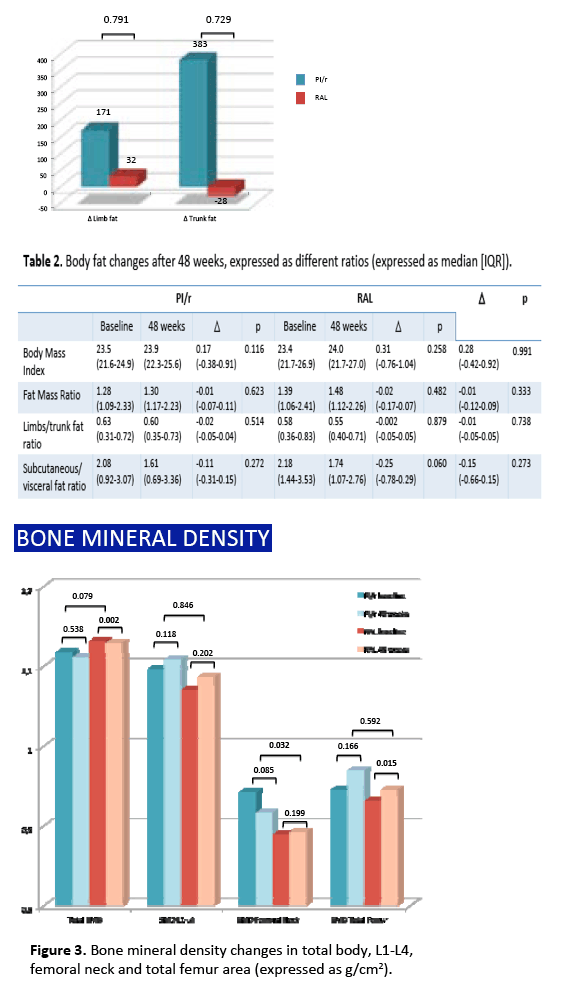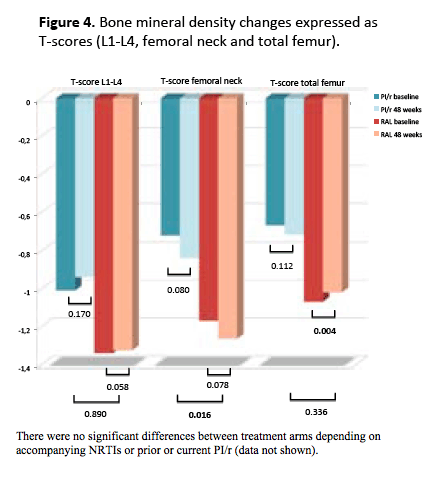 |
 |
 |
| |
Changes in Body Composition after Switching from Ritonavir-Boosted Protease Inhibitors to Raltegravir in Virologically Suppressed HIV-1-Infected Patients (SPIRAL-LIP substudy)
|
| |
| |
Reported by Jules Levin
CROI 2011
Adrian Curran1, Maria Saumoy2, Esteban Martinez3, Maria Larrousse3, Daniel Podzamczer2, Inma Ocana1, Montse Lonca3, Jose M Gatell3, Esteban Ribera1. 1.Hospital Vall Hebron, Barcelona, Spain. 2.Hospital de Bellvitge, Barcelona, Spain. 3.Hospital Clinic, Barcelona, Spain.
AUTHOR CONCLUSIONS
Significant increases in visceral fat were seen in the CT-scan with PI/r after 48 weeks, whereas no significant changes were seen in the RAL group. On the other hand, no significant changes were seen within or between treatment arms in subcutaneous fat.
No differences were seen between treatment groups in the DXA-scan regarding body fat after 48 weeks
A significant improvement in total femur BMD and T-score was seen within the RAL arm, whereas no significant changes in BMD or T-scores were seen with PI/r. No differences were seen in lumbar spine. The difference between treatment arms in femoral neck BMD and T-score was significant, favouring RAL.
Small differences were seen in body fat distribution and BMD after 48 weeks. Studies with longer follow-up are warranted.
From CROI NATAP Bone/Vit D Report by Todd Brown:
"PI → Raltegravir Switch: Certain PIs have been associated with lower bone mineral density with ART initiation. In the SPIRAL LIP study (#845), HIV-infected persons on suppressive ART were randomized to continue their PI-containing ART regimen or switch the PI for raltegravir. Switching to raltegravir was associated with increases in total body BMD, whereas those who remained on PI BMD showed no change over the 48 week interval. The between group differences were not significant. Spine and hip BMD were not measured in this study. These sites are not only more clinically relevant than total body BMD, but also are more sensitive to changes. Based on this study, it would be reasonable to carry out further studies to examine the PI to raltegravir switch on BMD at the spine and the hip. Little is known about raltegravir and bone, so this kind of switch strategy may be important, especially for older persons with lower BMD." See tables below




References
1. Martinez E, Larrousse M, Llibre JM, et al. Substitution of raltegravir for ritonavir-boosted protease inhibitors in HIV-infected patients: the SPIRAL study. AIDS 2010; 24:1697-707.
2. Caron-Debarle Mm, Lagathu C, Boccara F, Vigoroux C and Capeau J. HIV-associated lipodystrophy: from fat injury to premature aging. Trends Mol Med 2010; 16: 218-229.
3. Duvivier C, Kolta S, Assoumou L, et al. Greater decrease in bone mineral density with protease inhibitor regimens compared with nonnucleoside reverse transcriptase inhibitor regimens in HIV-1 infected naive patients. AIDS 2009; 23:817-24.
4. Lennox JL, Dejesus E, Berger DS, et al. Raltegravir versus Efavirenz regimens in treatment-naive HIV-1-infected patients: 96-week efficacy, durability, subgroup, safety, and metabolic
|
| |
|
 |
 |
|
|